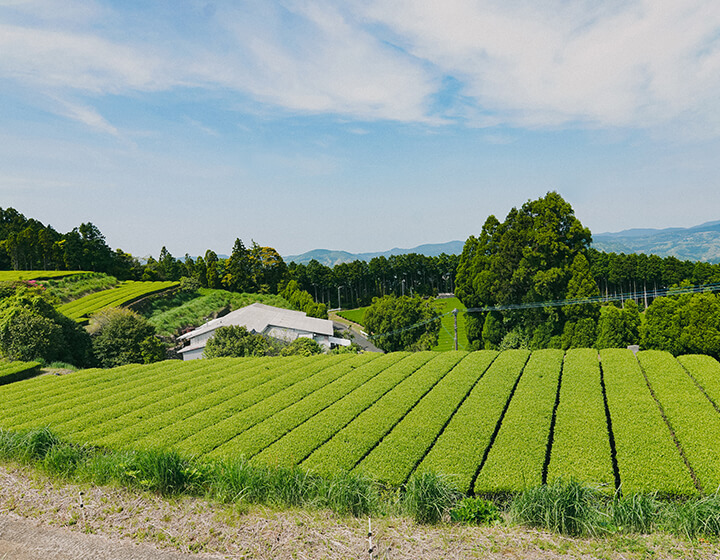The Kaminohara Green Tea Farm is located at the top of Niradake Mountain overlooking the sea. The green tea produced at Uenohara Seichaen, located at the top of Niradake Mountain overlooking the sea, is made by the “kama-fire” method, which is extremely rare among Japanese teas. Why do they continue to use the ” kama-yori” method in the tea industry, where “steamed” tea is the mainstream? We interviewed the tea industry to learn more about the appeal of kamagairi tea and the passion that goes into its production.
Kama-firi-cha, a traditional tea production method
Tea is broadly divided into three types: fermented tea, semi-fermented tea, and unfermented tea, as tea lovers may have heard. Fermentation in tea means oxidation of tea leaves by the action of oxidizing enzymes. Fermented tea” refers to black tea, “semi-fermented tea” refers to oolong tea, and “unfermented tea” refers to the green tea we drink on a daily basis.
Green tea is generally produced by steaming and heating picked tea leaves to inactivate enzymes and stop fermentation. However, did you know that there is a type of green tea called ” kama-iricha,” in which fermentation is stopped by “roasting” rather than “steaming” the tea leaves? Kamabiricha tea is characterized by its kamaka (aroma) and clear, golden water color.
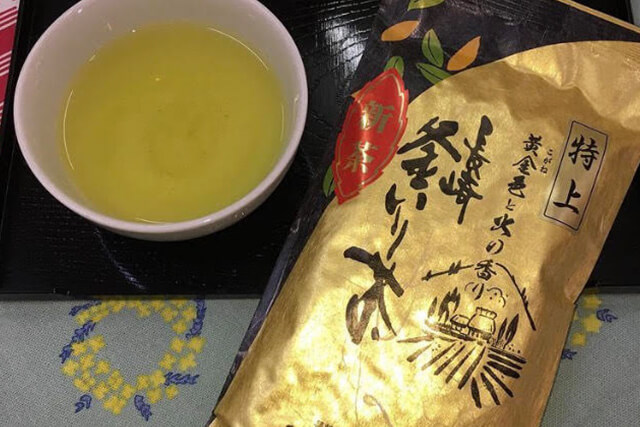
Kama-yori tea is the origin of green tea
The kamagairi method is said to have been introduced from China to the Kyushu region around the 15th century, and when sencha, Japan’s own steamed tea, was introduced in the 1700s, it replaced kamagairi tea not only for its flavor but also for its high production efficiency and ease of mass production. Sencha is the most common type of green tea produced in Japan. In other words, until the spread of sencha, all green teas in Japan were produced by the kamagairi method. Today, kamagairi tea accounts for less than 0.03% of all green teas produced in Japan (according to “Production by Tea Category in 2020” by the National Federation of Tea Producers Associations of Japan). Most of the production is limited to Nagasaki, Miyazaki, Kumamoto, and Saga prefectures, and a few other areas in the Kyushu region.
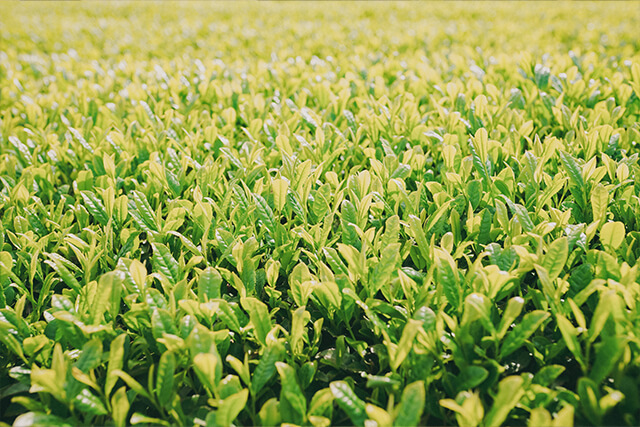
70 years of making rare kettle roasted tea
Kama-firi-icha is rarely seen, but one company that continues to produce this rare tea is Uenohara Seichaen in Nagasaki Prefecture. Sasa-cho, Kitamatsuura-gun, in the northern part of the prefecture, near the westernmost tip of mainland Japan. Mr. and Mrs. Koji Uenohara run the business on the 350-meter-high plateau at the top of Mt.
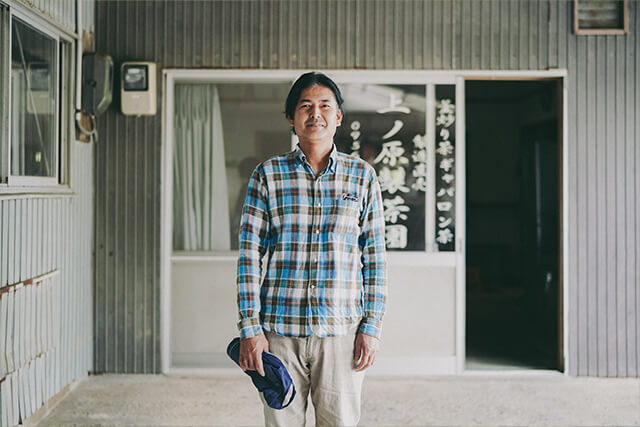
Koji’s grandfather, Kisuke Uenohara, cultivated the tea fields here 70 years ago. At that time, the surrounding area produced only kettle-fired tea, but with the wave of modernization, steaming machines were introduced nationwide, and the kettle-fired tea factories in the Kyushu region quickly shifted to sencha (roasted green tea).
Unintentional Remnants of the Kama-firi-Tea Production Method
The reason why Uenohara Seichaen did not introduce steaming machines in the 1970s was that they had just renovated their factory and did not have the funds to do so. Koji recalls with a wry smile, “We had just bought a new factory and new machines, and we felt left behind because we could not immediately buy new machines. This “failure” to introduce the steaming method at that time was one of the reasons why Uenohara Seichaen has continued to produce kettle-fired tea.
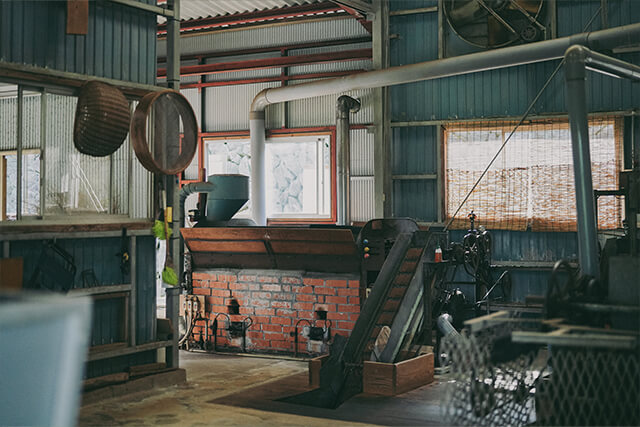
Aiming to convey a different appeal from sencha
In fact, the kettle-frying machines at Kaminohara Seichaen have only one-third the processing capacity of ordinary steaming machines, which is quite low. Sencha is more efficient to produce, and the heating stage tends to retain more of the flavor, so its quality is more easily evaluated and marketed,” says Koji. He says that he was a bit impatient and anxious at one time, as others around him were shifting to sencha production, but “there are very few places, including ourselves, that make kama-firi-cha,” he says. That is why we have to preserve the taste,” he says, and has been working hard to produce tea.
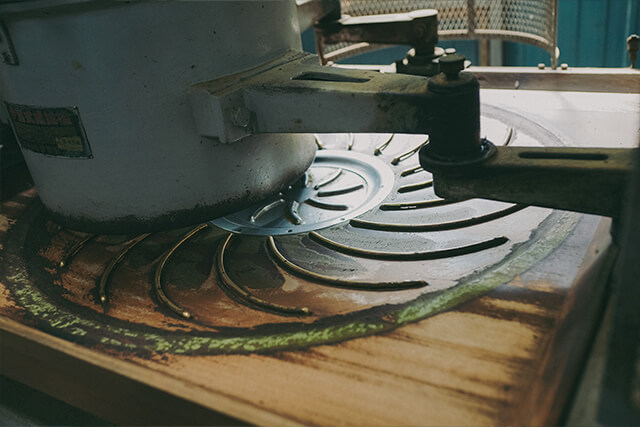
If ‘umami’ is the definition of quality, I am sure that sencha is easily evaluated. However, when it comes to which tea to pair with a meal, which tea to choose? When it comes to which tea to pair with a meal, a clean tea that does not interfere with the food is more likely to be preferred than a tea with a strong umami flavor. In that sense, kama-yaki is good. It also goes well with fried foods,” says Koji. In fact, in China and Taiwan, kama-firi-cha is the most popular tea for daily use as food tea. Koji is also pursuing the possibilities of kettle-fired tea and continues his research every day, saying, “I want as many people as possible to know the appeal of kettle-fired tea, which is different from sencha green tea.
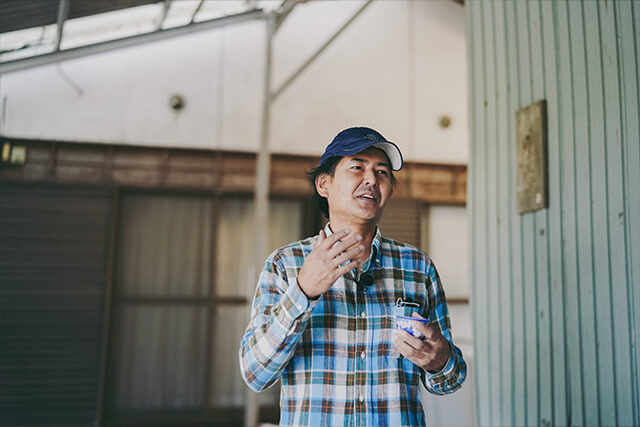
Health tea for relaxation and a good night’s sleep
As a new challenge for kettle-fired tea, Koji began producing ” Gabaron-cha ” about 30 years ago. Gabarron Tea is a relatively new natural health tea that was accidentally created during research at the Tea Research Institute (now the Vegetable Tea Research Institute) in the 1980s. It is produced by anaerobically treating green tea leaves (placing them in an oxygen-free environment), which causes an enzyme in the leaves to change into a substance called gaba (gamma-aminobutyric acid).
GABA is a type of amino acid that is believed to have a relaxing effect, reduce stress, and improve the quality of sleep. It is also said to inhibit the increase of cholesterol and neutral fat, which cause arteriosclerosis, and has been attracting more and more attention in recent years. GABALON TEA” is named after its main ingredient “gaba” and “long” of oolong tea. The manufacturing process is the same as that used to make oolong tea, and it is classified as a semi-fermented tea. Koji says, “We have tried to make it easy to drink without losing any of the ingredients and without losing the distinctive aroma of kettle-fired tea. Through a process of trial and error, we have eliminated the bitterness and harshness characteristic of Gabalon tea and created a light, oolong-like flavor.
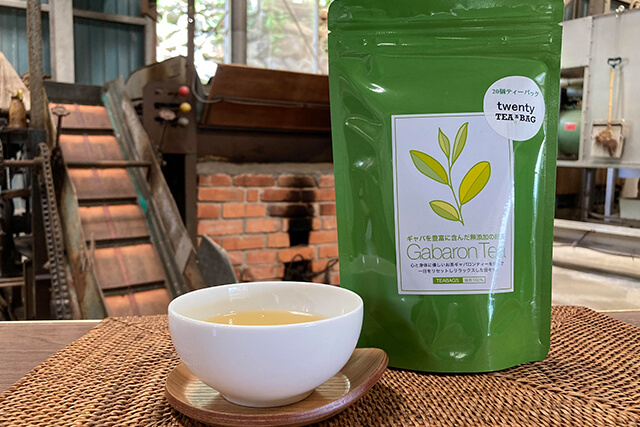
Original blended teas to suit your health condition
Uenohara Seichaen also produces and sells “Koso Cha,” a blend of Gabaron tea and medicinal herbs. Based on a blend of 11 medicinal herbs, including dokudami, safflower, black soybean, adlay, and loquat leaves, the tea is also available in original blends tailored to the drinker’s physical condition. Tea is something you drink every day. We hope to offer teas that gradually improve the body constitution, such as those that raise the basal body temperature and strengthen the immune system, just like Chinese herbal medicines,” he says.
Also opened a direct sales store.
In 2010, he opened a Japanese-style cafe “Ippuku” in the center of Sasa Town to “preserve the culture of kettle roasted tea and convey its charm. Visitors can purchase a variety of products including kama-yori tea from Uenohara Tea Farm, and relax while enjoying chazuke (rice with green tea) made with kama-yori tea and handmade zenzai (Japanese sweet made from soy beans).
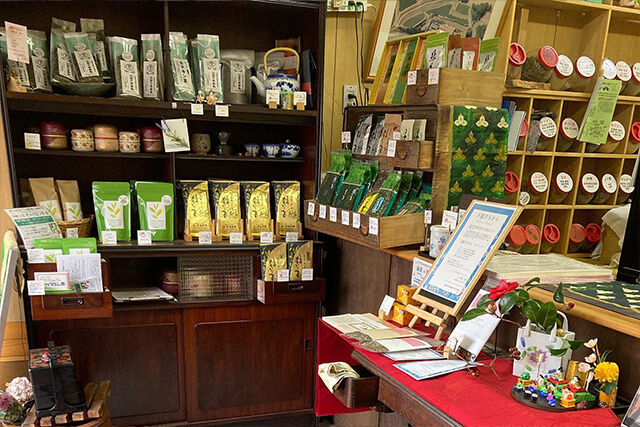
No pesticides or chemical fertilizers
The Uenohara Tea Farm switched to pesticide-freefarming about six years ago in order to “grow tea that is more in tune with nature. Although weeding is done by hand, he says, “I just let nature take its course. In a sense, the workability has improved tremendously, and it doesn’t cost much anymore,” says Koji. When we first changed our methods, the harvest was often cut in half or things didn’t go well, but since the beginning of this year, the growing environment in the fields has improved greatly, and the taste and yield have become more stable.
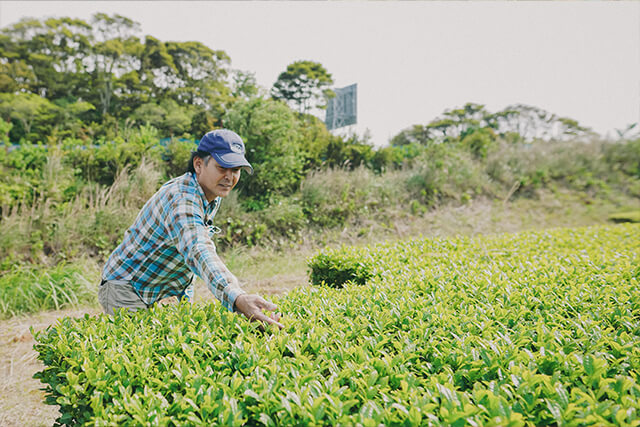
We are working with nature, doing only what is necessary, without overdoing it.
Although sencha may be more in demand,” says Koji, “rather than making a lot of sencha, I can only make enough kama-firi-cha to reach the people who need it and in quantities that I can sell. When you see him loving the tea within his reach without overstretching himself, the taste of the clear, golden kamabai-cha (roasted tea leaves) becomes even more special.
He said, “Even if you don’t give pesticides or fertilizers to the tea trees, they will sprout and produce delicious tea even in their natural state. My grandfather planted tea trees on this land, which was never fertile to begin with, and they have taken root, passed down to my father and me. And now, I am deeply moved when I think that nature has made it possible to produce the buds that it wants to produce. As long as there are people who want to drink kettle roasted tea, I would like to keep this tea tree alive and make tea.
Koji’s cheeks relax as he looks back at the tea plantation spreading out on the top of Mt.




